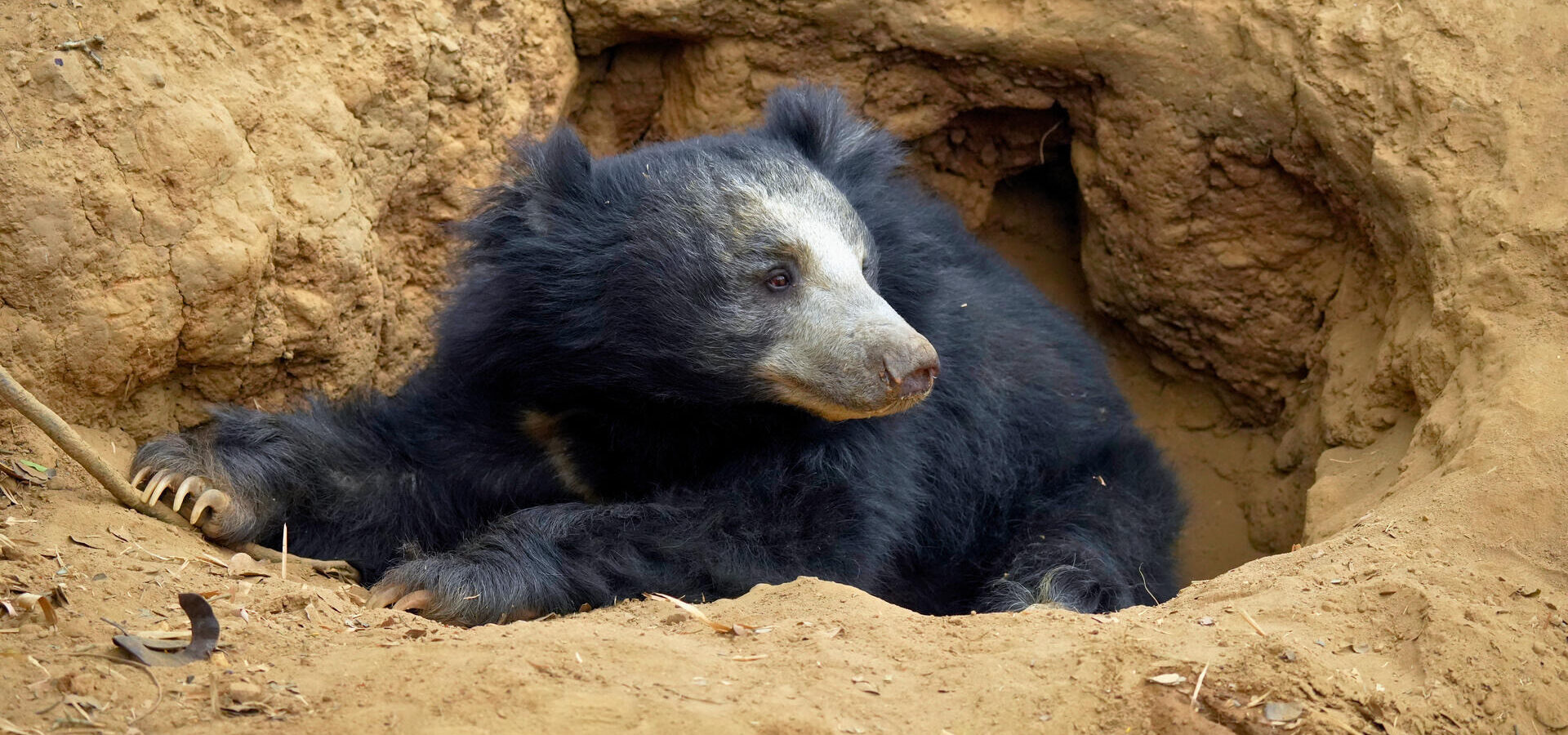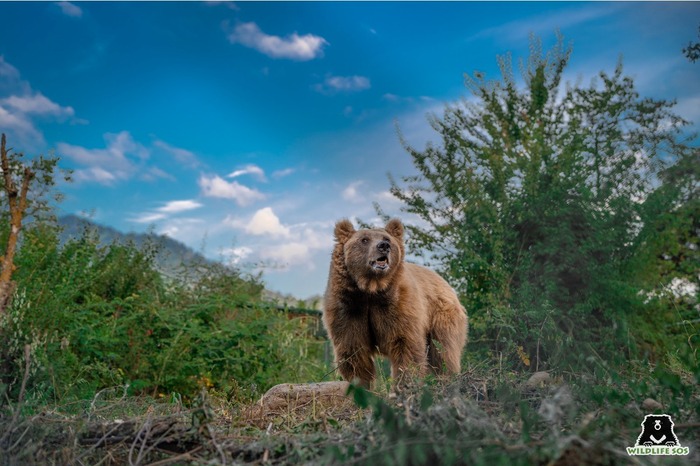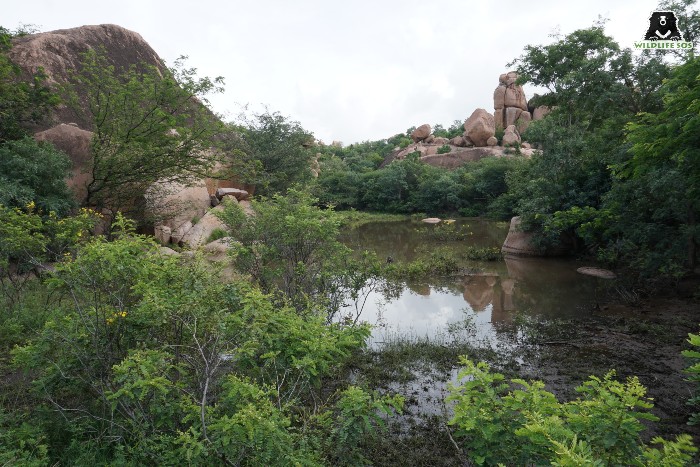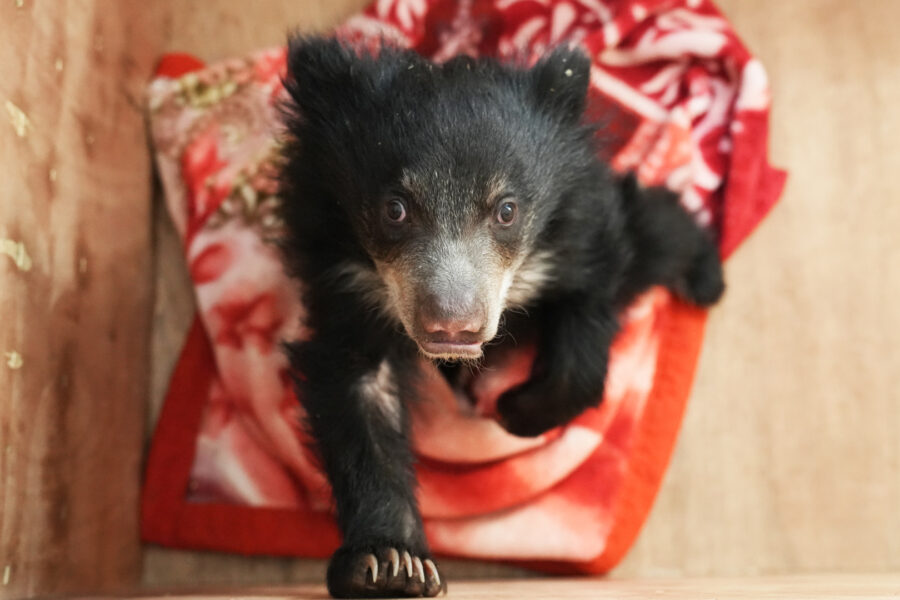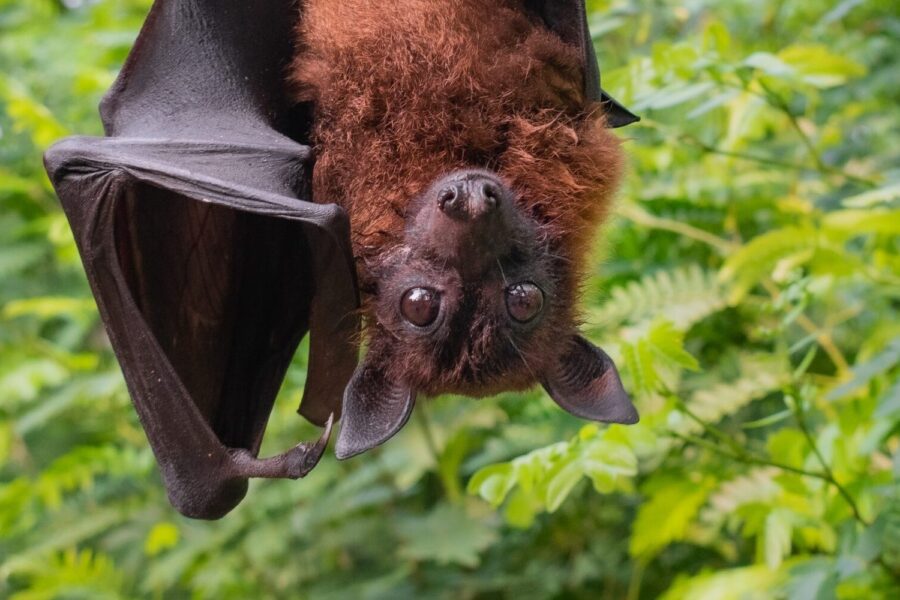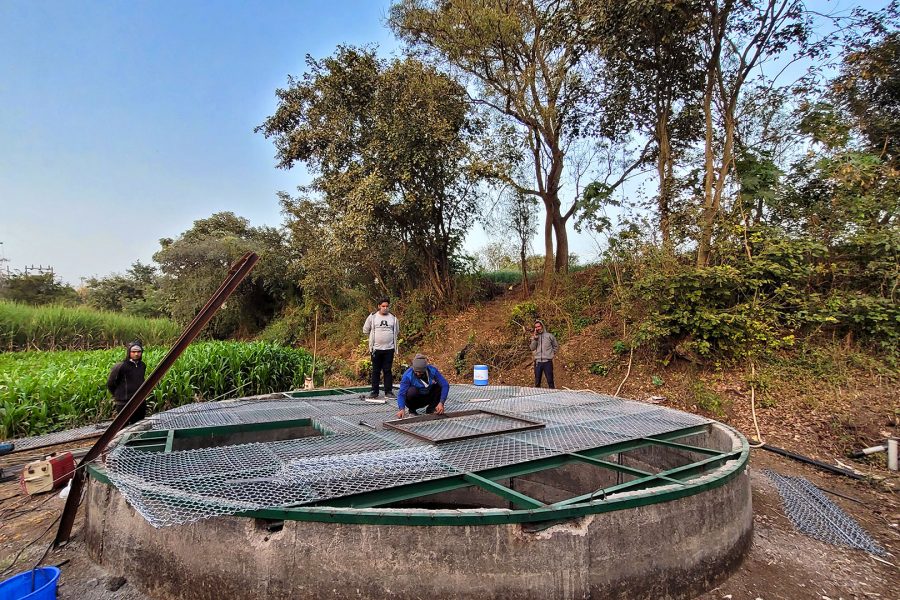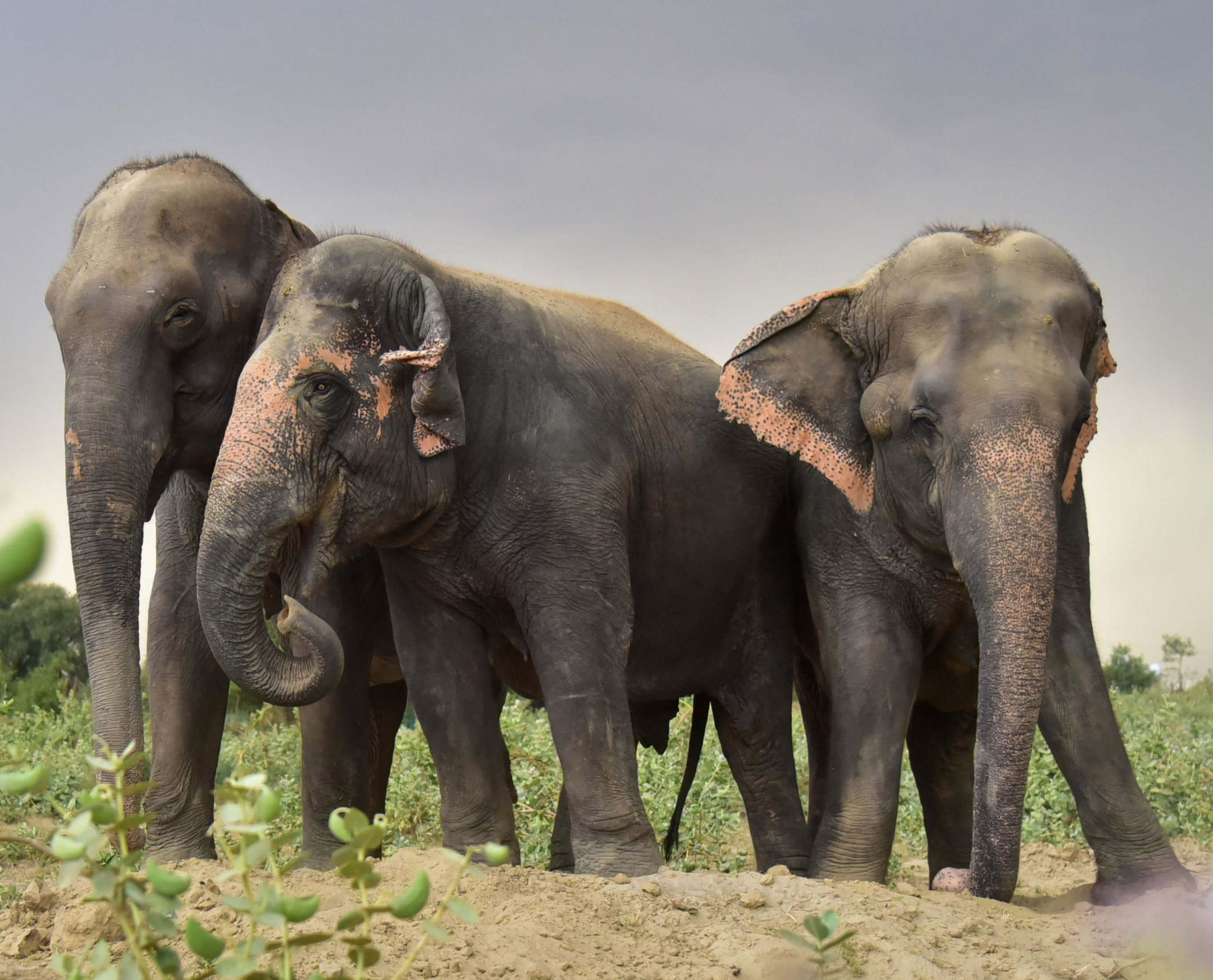Bear!
The mere four-letter word calls to mind visions of power, wilderness and intrigue. Perhaps it also brings the images of a white polar bear walking across icy expanses in the Arctic, or the massive panda feeding on bamboo, or the famous grizzly bear of North American forests. Over centuries, bears have caught the imagination of human beings, right from their appearance in ancient myths to becoming iconic animals representing contemporary conservation movements.

- A Himalayan brown bear rescued from human-wildlife conflict in Sonmarg, Sebastian roams majestically in the vast Dachigam Rescue Centre. [Photo © Wildlife SOS/Akash Dolas]
Each year on March 23, we celebrate World Bear Day, pausing to admire these awe-inspiring animals that plod along mountains, forests and snowy tundras. Bears represent strength and are an integral part of their habitats. While they exhibit powerful glory, several species of bears are facing danger from deforestation, climate change and poaching.
On this special day, let’s recall the eight incredible bear species found across the globe, before we explore how Wildlife SOS has become a beacon of hope for bear conservation in India.
The Bears of the World
- American black bear (Ursus americanus) – They are extremely versatile bears that inhabit North America and parts of Mexico. Unlike what their name suggests, the colour of their fur may vary from cream to reddish to dark brown, and often assumed to be carnivores, these bears are actually omnivorous by nature.
- Brown bear (Ursus arctos) – Brown bears are large and native to North America and Eurasia. Its subspecies called the Himalayan brown bear can be found scattered across parts of Nepal, Tibet, west China, north India, Pakistan, Uzbekistan, Tajikistan, and Kyrgyzstan.
- Polar bear (Ursus maritimus) – These apex predators are adapted to icy terrains of the Arctic region. This is the very region where rising temperatures of our planet is showcasing its extreme effect, which in turn is negatively impacting this bear species.
- Asiatic black bear (Ursus thibetanus) – They are also known as moon bears for the white crescent patch on their chest. These bears can be found in India, Nepal, Pakistan, Afghanistan, Bangladesh, Bhutan, Vietnam, Cambodia, Indonesia, Democratic People’s Republic of Korea, Thailand, and Myanmar.
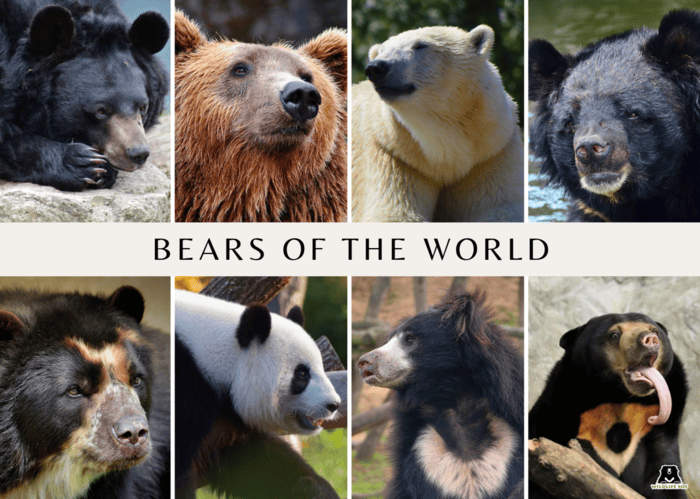
- Clockwise from top left – American black bear, brown bear, polar bear, Asiatic black bear, spectacled bear, giant panda, sloth bear, sun bear [Photo © Wildlife SOS/Canva]
- Spectacled bear (Tremarctos ornatus) – South America’s sole native bear, it is distinguished by its markings that resemble a spectacle’s frame on its face. These bears are mostly vegetarian and depend on shoots and fruit-bearing trees of Andean forests.
- Giant panda (Ailuropoda melanoleuca) – The bear most recognised for its association with wildlife conservation, giant pandas were once widespread across China, Myanmar and Vietnam. However now, these bears are found only within the bamboo forests of southwest China.
- Sloth bear (Melursus ursinus) – These are native to India, Nepal and Sri Lanka. One of the most understudied bear species, sloth bears were unfortunately caught in the brutal ‘dancing’ bear practice that was carried out to entertain crowds.
- Sun bear (Helarctos malayanus) – Smallest of all bear species, they are mainly found in Southeast Asia, including India, Cambodia, Malaysia, China, Indonesia, Myanmar, Thailand, and Vietnam.
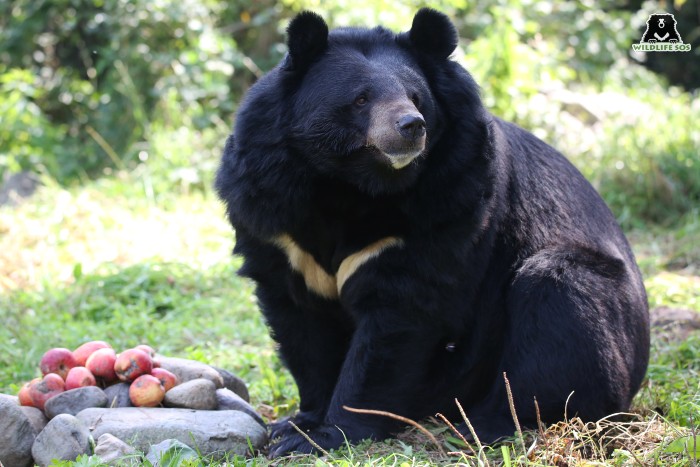 Rescued Asiatic black bear, Rozy, thrives in the safety of the Dachigam Rescue Centre [Photo © Wildlife SOS/Mradul Pathak]
Rescued Asiatic black bear, Rozy, thrives in the safety of the Dachigam Rescue Centre [Photo © Wildlife SOS/Mradul Pathak]
If you’d like to know more fascinating facts on these eight bears, click here!
Wildlife SOS: A Beacon of Hope for India’s Bears
Even after the dancing be practice was made illegal with the implementation of India’s Wildlife (Protection) Act in 1972, sloth bears continued to be held captive as ‘dancing’ bears that were made to perform on streets. From 1995 to 1997, an in-depth study was therefore carried out by Wildlife SOS that revealed the dark truth behind this brutal trade. This investigation gave birth to a revolutionary campaign that put an end to this inhumane practice. With the cooperation of the Ministry of Environment, Forest and Climate Change of India and state forest departments, Wildlife SOS established its 1st sloth bear rescue centre in Agra, after which one each in Bangalore, Bhopal and Purulia followed. These sanctuaries, till date, have offered over 628 rescued sloth bears with medical attention, rehabilitation and a life free from neglected captivity.
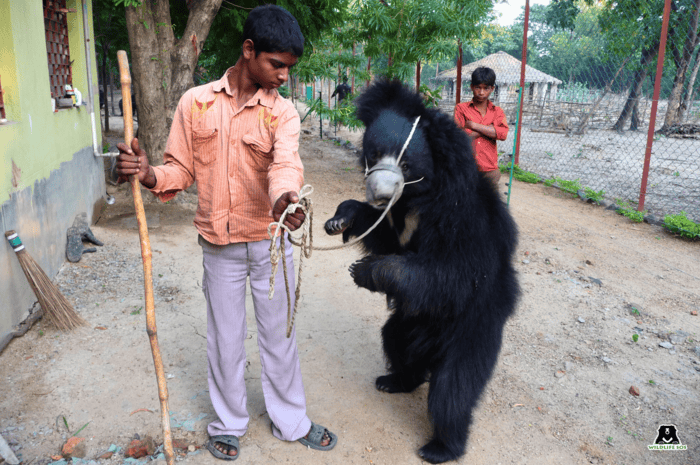
- By 2009, India bid farewell to the era of ‘dancing’ bears, rescuing sloth bears from this practice and introducing alternative livelihoods to the Kalandar community that had solely relied on this trade for their financial sustenance. [Photo © Wildlife SOS]
Realising that holistic and sustainable conservation needs to address those who relied on this practice for their livelihoods as well, Wildlife SOS extended its efforts to support the Kalandar community that was dependent on working bears as their only source of income. By providing skill-based training, educational support and opportunities to join and assist the organisation, new doors were opened for Kalandar families that could now explore alternative livelihoods. Vocational training was given to the women, while education was provided to the children so as to end the cycle of sloth bear exploitation. To stop poachers from targeting wildlife for income, Wildlife SOS took another significant step: it offered this tribe the opportunity to protect sloth bears and their habitat that they knew so well.
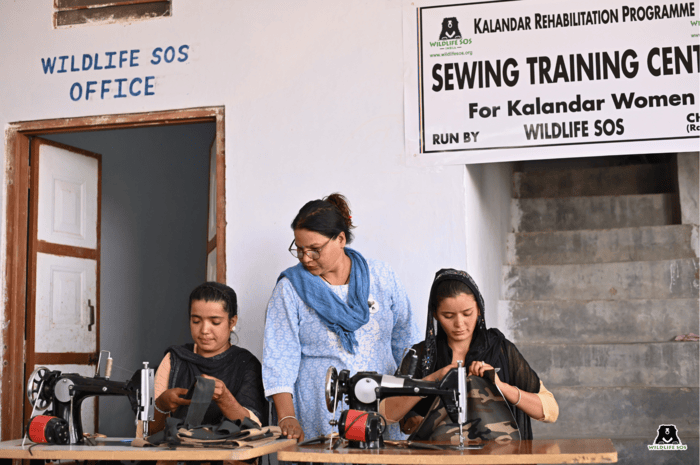
- Wildlife SOS has helped more than 3,000 women of the Kalandar community by introducing skill training in sewing, embroidery, crochet, knitting, candlemaking, incense stick manufacturing, block printing and tie-dye processes, to name a few. [Photo © Wildlife SOS/Suryoday Singh Mann]
Sloth bear conservation efforts also required an understanding of their biology and behavioural patterns, the information for which has been limited and barely explored. This led our team to study sloth bears across various forests in Karnataka where a decline of their population was observed. Results of this project helped us understand the threats they faced due to habitat destruction and fragmentation, which is leading to conflict scenarios.
To extend research on sloth bear behaviour, habitat selection and use, their movement, and their interaction with other sloth bears, GPS and VHF radio collars are being professionally placed on sloth bears across three districts in Karnataka under a five-year project. By remotely tracking these bears, the project aims to develop effective conservation and conflict mitigation strategies.
Habitat conservation is essential to protect wild species. Once lush and replete with sloth bears, Ramdurga Valley in Karnataka became an arid land that no longer supported these bears. In an effort to revive the bear population, Wildlife SOS initiated the Ramdurga Rewilding Project to restore the degraded land. Covering almost 100 acres, the project involved reintroducing indigenous flora, such as mahua, neem, arjuna, mango and bamboo saplings. This remarkable habitat restoration initiative secured the return of sloth bears, but that’s not all. It has also caused other wildlife such as leopards, wolves, jackals, jungle cats, civets and numerous bird and reptile species to also make a comeback!

- Effective irrigation measures implemented led to the creation of freshwater habitats in the form of wetlands in Ramdurga Valley, Karnataka. [Photo © Wildlife SOS]
In addition to sloth bears, Wildlife SOS rescues and cares for India’s two other splendid species of bears — Asiatic black bears and Himalayan brown bears. These bears from Jammu & Kashmir are victims of human-bear conflict. Using established protocols, Wildlife SOS operates the Pahalgam Rescue Centre and Dachigam Rescue Centre for bears rescued from such situations.
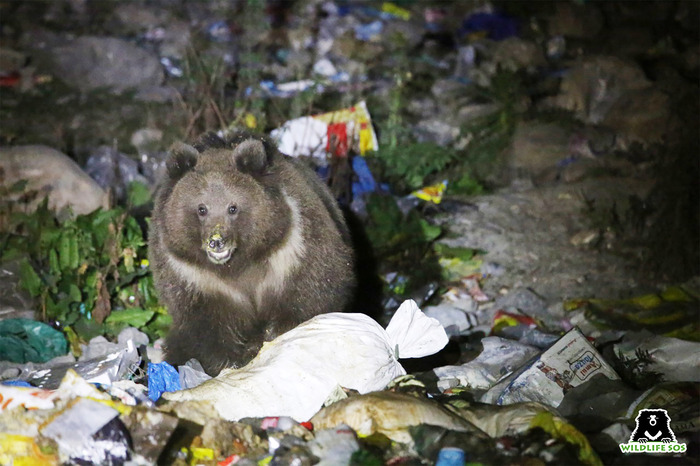 Himalayan Brown bears are facing rapid habitat degradation [Photo © Wildlife SOS/ Aaliya Mir]
Himalayan Brown bears are facing rapid habitat degradation [Photo © Wildlife SOS/ Aaliya Mir]
With an intent to understand more on what is less known about Himalayan brown bears, Wildlife SOS conducted a radio-collaring project of these bears along with the Jammu & Kashmir Wildlife Protection Department. The aim is to mitigate conflict situations, for which studying free-ranging Himalayan brown bears’ movement, habitat utilisation, hibernation period, and more is crucial. A preliminary field study had been conducted by the organisation that had brought out one of the most alarming facts behind increased frequency of human-bear encounters: it is improper waste management that is leading Himalayan brown bears to conveniently feed on food like biryani that is frequently disposed near human settlements.
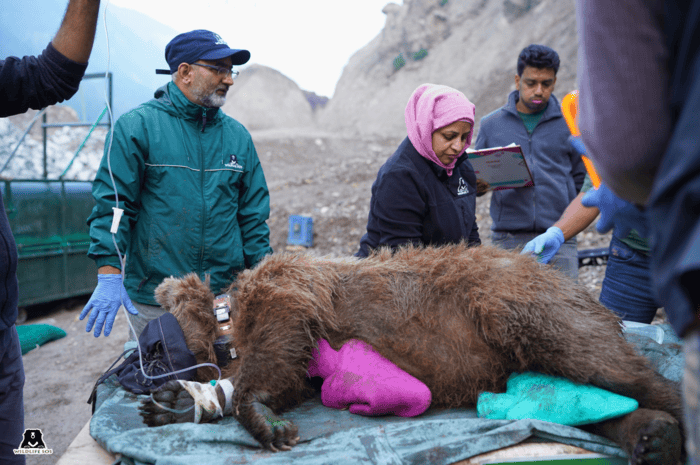
- Wildlife SOS is successfully tracking Himalayan brown bears in Sonmarg to study their behaviour in an effort to reduce human-bear conflict in Jammu & Kashmir. [Photo © Wildlife SOS/Akash Dolas]
In an effort to prevent retaliatory attacks on bears and other wildlife people encounter, Wildlife SOS closely collaborates with urban and rural societies to spread awareness about their surrounding ecosystems. The organisation provides workshops and training programmes for forest officers, police officials and local people to educate them on securing wild habitats, bear behaviour, conflict resolution and rescue techniques.
Apart from a safe haven for bears at six of our rehabilitation centres, Wildlife SOS opens up opportunities for visitors, volunteers, and the upcoming generation of wildlife conservationists to witness the bears under our dedicated care.
A Future Where Bears Flourish
On this World Bear Day, let us make it a point to help save these marvelous mammals. Bears are not just inhabitants of the wild; they are important for maintaining the ecological balance in their environment.
Through field studies, rescue operations and outreach to local communities, Wildlife SOS continues to leave its mark on bear conservation in India. It’s not only about rescuing individual bears from critical situations — it’s about creating a culture of coexistence, respect and harmony between humans and animals.
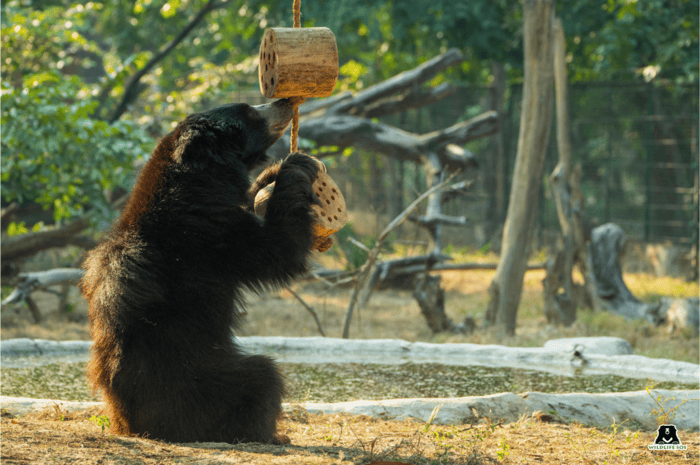
- Found with smashed teeth and severe injuries to his muzzle, Ron was one of the five survivors of an anti-poaching bust, and ever since his arrival at the Agra Bear Rescue Facility, our team has ensured that he and the rest of the rescued bears at the centre lead a safe life under humane care. [Photo © Wildlife SOS/Atharva Pacharne]
With each bear rescued and each awareness campaign initiated, Wildlife SOS conveys how compassion and determination can redefine the sphere of wildlife conservation.
Your contribution can help provide rescued bears with medical care, food and a safe environment to heal. Donate today and be a part of the bear conservation story!
Feature image: Wildlife SOS/ Hemanta Bijoy Chakma

